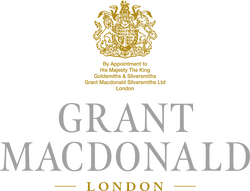
“Success is not the key to happiness. Happiness is the key to success. If you love what you are doing, you will be successful.’’
— Albert Schweitzer

As the craftsmen Grant had hired became more familiar with his style, they began to suggest modifications that would make the designers simpler to transform into real pieces. For example, instead of raising a flat sheet by hand, it might be scored, folded into the required shape, and then soldered to form a vessel - a process that saved time - and saving time meant saving money. For Grant, there was no value in making an object laboriously if there was a better way to do it. With the craftsmen finding new ways to work efficiently, making multiples became more cost-effective than single items, and sets such as half a dozen wine cups began to feature in the orders - just in time for Christmas.

The innovation didn’t stop with the process - introducing plastics to the creations resulted in creative and unique items such as the trophies made for the 1972 BP National Schools Hovercraft Competition, which used rectangles of transparent perspex to create the illusion that the silver hovercrafts were floating above the rosewood base. These pieces were larger, too - thanks to the cost-effectiveness of the materials - and these substantial trophies caught the eye of customers such as The Daily Mirror, who became a customer for annual press awards, joining the queue of new customers seeking trophies, medals and miniatures for achievements in both work and in sporting competitions.
A steady inflow of orders began to run through the workshop, from silver napkin rings and beakers to amethyst bookends, citrine paper knives and quartz ‘post’ boxes. Novelty items such as cases for cigarette lighters, pill boxes, money clips and cigar cutters gave Grant and the team of craftsmen plenty of opportunities to experiment with new forms in silver.
